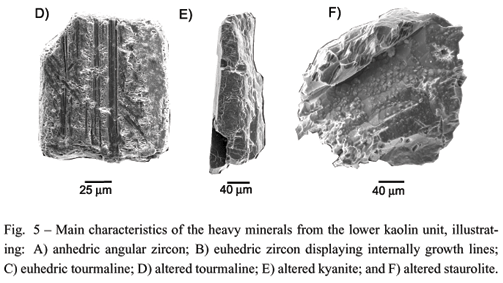Studies of heavy minerals in kaolin deposits from the Ipixuna Formation in the Rio Capim area (Northern Brazil) showed a mature to super mature assemblage dominated by zircon and tourmaline, and subordinately rutile, kyanite and staurolite. These minerals do not change much throughout the whole section; however, each kaolin unit displays a particular signature, defined by differences in the proportions of the whole assemblage of heavy minerals, as well as of their textural characteristics. This work revealed that the lower and upper kaolin units can be definitely considered as distinct depositional sequences. A higher proportion of opaque minerals and higher zircon values characterize the lower unit. The higher volumes of anhedric, rounded to sub-rounded grains of zircon and tourmaline in the upper unit suggests that this includes grains that were undergone to a higher degree of reworking. The increased volume of unaltered staurolite and kyanite in the upper unit leads to conclude that, even considering sediment reworking, a distinct source must be invoked. The results also show that the characteristics of the heavy mineral assemblage from the intermediate unit are comparable with those from the upper unit, which suggests they might record a same stratigraphic sequence.
heavy minerals; kaolin deposits; Ipixuna Formation; Early Cretaceous; Cametá Sub-Basin










